-
RESEARCH01-01-2017
Developing skills learning in obstetric nursing: approaches between theory and practice
Revista Brasileira de Enfermagem. 2017;70(5):1054-1060
Abstract
RESEARCHDeveloping skills learning in obstetric nursing: approaches between theory and practice
Revista Brasileira de Enfermagem. 2017;70(5):1054-1060
DOI 10.1590/0034-7167-2016-0665
Views0See moreABSTRACT
Objective:
To analyze the development of professional skills in an obstetric nursing graduate course.
Method:
Qualitative research, applying semi-structured interviews with 11 students in the obstetric nursing specialization at the State University of Ceará. Data was submitted to thematic review.
Results:
According to the subjects, the course offers the development of skills to strengthen and expand the range of activities in obstetric nursing. Despite relying on previous knowledge and experience acquired by the students, there is a gap between the content taught and internship practice, presented as challenges and difficulties faced by the students. The findings suggest a need for curricular revision, incorporating active teaching-learning methodologies, to overcome the disjunction between theory and practice.
Final considerations:
Students are part of a corpus that is potentially implicated in the construction and transformation of thoughts and values set forth by educational and health institutions, and it is necessary to make changes in political and social organizations, with a focus on providing comprehensive and egalitarian care to the population.
-
RESEARCH01-01-2017
Chronic hepatitis B and D: prognosis according to Child-Pugh score
Revista Brasileira de Enfermagem. 2017;70(5):1048-1053
Abstract
RESEARCHChronic hepatitis B and D: prognosis according to Child-Pugh score
Revista Brasileira de Enfermagem. 2017;70(5):1048-1053
DOI 10.1590/0034-7167-2016-0205
Views1See moreABSTRACT
Objective:
compare chronic hepatitis B patients to those superinfected with hepatitis D virus, according to Child-Pugh score regarding disease severity.
Method:
retrospective descriptive study, performed with 59 patients followed in the ambulatory, of which 22 (37.3%) were chronically infected with hepatitis B virus (Group HBV) and 37 (62.7%) superinfected with Delta virus (Group HBV+HDV); variables of sex, age and items of Child-Pugh score were collected by consulting medical records.
Results:
out of the patients, 57.6% were male, with a mean age of 30.5 years. Score A, which indicates lesser severity, was found in 100% of group HBV and 78.4% of group HBV+HDV. Score B, which indicates greater severity, was found only in group HBV+HDV in 21.6% of the patients.
Conclusion:
by means of the Child-Pugh score, it was observed that patients with superinfection by HDV tended to present a worse prognosis.
-
RESEARCH01-01-2017
Humanization in the Intensive Care: perception of family and healthcare professionals
Revista Brasileira de Enfermagem. 2017;70(5):1040-1047
Abstract
RESEARCHHumanization in the Intensive Care: perception of family and healthcare professionals
Revista Brasileira de Enfermagem. 2017;70(5):1040-1047
DOI 10.1590/0034-7167-2016-0281
Views0See moreABSTRACT
Objective:
Understanding perceptions of family members and healthcare professionals about humanization at the Intensive Care Unit (ICU) to direct it to an educational action.
Method:
Exploratory descriptive and qualitative study conducted in an ICU level 3 of a public hospital in Porto Alegre, RS, Brazil, with fourteen subjects, eight family members and six healthcare professionals. Data collection carried out through semi-structured interviews and focus group. Content Analysis was used.
Results:
Emerged categories were: welcoming; communication; ethical and sensible professionalism; unfavorable aspects; perception on humanization; and religiosity/spirituality.
Final considerations:
Although the subjects have expressed their perceptions about humanization in different ways, both groups pointed out the same needs and priorities to improve humanization in Intensive Care. From the results, we created a reflective manual of humanizing assistance practices for professionals, a board to facilitate communication of these professionals with patients and a guideline book for family members.
-
RESEARCH01-01-2017
Knowledge of adolescents regarding sexually transmitted infections and pregnancy
Revista Brasileira de Enfermagem. 2017;70(5):1033-1039
Abstract
RESEARCHKnowledge of adolescents regarding sexually transmitted infections and pregnancy
Revista Brasileira de Enfermagem. 2017;70(5):1033-1039
DOI 10.1590/0034-7167-2016-0531
Views0See moreABSTRACT
Objective:
To investigate the knowledge of adolescents related to sexually transmitted infections (STIs), AIDS, and pregnancy, and understand the role of school in sex education.
Method:
A qualitative descriptive study, developed through a semi-structured interview and a form for participant characterization, with 22 high school students from a public school aged 16 to 19 years. Data were submitted to content analysis.
Results:
After analysis, four thematic categories were developed: sexuality and sex education; understanding of risk behaviors; knowledge of STI/AIDS; and knowledge of and practices for prevention.
Final considerations:
This study showed the need for preventive educational actions for adolescents, because the lack of information contributes to their vulnerability. The adolescents recognize the importance of sex education; therefore it is important to implement strategies to promote and protect health in the school environment to encourage and strengthen self-care in health.
-
RESEARCH01-01-2017
Care necessities: the view of the patient and nursing team
Revista Brasileira de Enfermagem. 2017;70(5):1026-1032
Abstract
RESEARCHCare necessities: the view of the patient and nursing team
Revista Brasileira de Enfermagem. 2017;70(5):1026-1032
DOI 10.1590/0034-7167-2016-0197
Views0See moreABSTRACT
Objectives:
To compare care necessities as perceived by the patient and nursing team and to investigate the sociodemographic factors associated with these perceptions.
Method:
A comparative study was conducted in units and hospitalized patients of a hospital institution in the state of São Paulo. The participants comprised 100 health professionals (50 nurses and 50 nursing technicians and auxiliaries) and 50 patients. A questionnaire was constructed and validated regarding care needs and was completed by the participants.
Results:
Considering cut-off value kappa ≥ 0.61, or that is, good and very good intervals, the greatest agreement between the perception of the patients and the nursing team was in the areas of: Care and Communication, both with 92.6% agreement; followed by Basic Care with 74.1%. The lowest value was found in the field of Care Planning and Organization, 64.3%.
Conclusion:
In a general manner, there was an agreement between the care needs from the view of the patients themselves and the nursing team.
-
RESEARCH01-01-2017
Critical incidents connected to nurses’ leadership in Intensive Care Units
Revista Brasileira de Enfermagem. 2017;70(5):1018-1025
Abstract
RESEARCHCritical incidents connected to nurses’ leadership in Intensive Care Units
Revista Brasileira de Enfermagem. 2017;70(5):1018-1025
DOI 10.1590/0034-7167-2016-0137
Views0See moreABSTRACT
Objective:
The goal of this study is to analyze nurses’ leadership in intensive care units at hospitals in the state of São Paulo, Brazil, in the face of positive and negative critical incidents.
Method:
Exploratory, descriptive study, conducted with 24 nurses by using the Critical Incident Technique as a methodological benchmark.
Results:
Results were grouped into 61 critical incidents distributed into categories. Researchers came to the conclusion that leadership-related situations interfere with IC nurses’ behaviors. Among these situations they found: difficulty in the communication process; conflicts in the daily exercise of nurses’ activities; people management; and the setting of high quality care targets.
Final considerations:
Researchers identified a mixed leadership model, leading them to the conclusion that nurses’ knowledge and practice of contemporary leadership theories/styles are crucial because they facilitate the communication process, focusing on behavioral aspects and beliefs, in addition to valuing flexibility. This positively impacts the organization’s results.
-
RESEARCH01-01-2017
Cross-cultural adaptation and validation of the Moral Distress Scale-Revised for nurses
Revista Brasileira de Enfermagem. 2017;70(5):1011-1017
Abstract
RESEARCHCross-cultural adaptation and validation of the Moral Distress Scale-Revised for nurses
Revista Brasileira de Enfermagem. 2017;70(5):1011-1017
DOI 10.1590/0034-7167-2016-0518
Views0See moreABSTRACT
Objective:
Cross-culturally adapt and validate the Moral Distress Scale-Revised for nurses.
Method:
Quantitative, analytical cross-sectional study conducted with 157 nurses of two hospital institutions of Southern Brazil, one public and one philanthropic. Procedures conducted: cultural adaptation of the instrument according to international recommendations; validation for the Brazilian context.
Results:
Face and content validation was considered satisfactory as assessed by a specialist committee and a pretest. The instrument demonstrated satisfactory internal consistency through frequency and intensity analysis per question in the 157 items and per subgroups of the various hospital units. Cronbach’s alpha was 0.88 for the instrument and between 0.76 and 0.94 for hospital units. Pearson’s correlation found a moderate association for moral distress among nurses.
Conclusion:
The Moral Distress Scale-Revised – Brazilian version is a valid instrument for the assessment of moral distress in nurses.
-
RESEARCH01-01-2017
Sexual orientation and quality of life of people living with HIV/Aids
Revista Brasileira de Enfermagem. 2017;70(5):1004-1010
Abstract
RESEARCHSexual orientation and quality of life of people living with HIV/Aids
Revista Brasileira de Enfermagem. 2017;70(5):1004-1010
DOI 10.1590/0034-7167-2016-0420
Views0See moreABSTRACT
Objective:
To analyze whether sexual orientation affects the quality of life of people living with HIV/Aids (PLWHA).
Method:
A cross-sectional analytical study was carried out with 146 PLWHA in Teresina, capital city of the state of Piauí, in 2013, by means of the WHOQOL-HIV-bref. Descriptive analysis and multiple linear regression were used for data analysis.
Results:
There was a prevalence of men (63.7%), non-heterosexual (57.0%), aged between 19 and 39 years (89%). Of the total, 75.5% mentioned presence of negative feelings, such as fear and anxiety, and 38% reported have suffered stigma. With regard to the dimensions investigated, the most affected were “environment” and “level of independence”. Non-heterosexual orientation was negatively associated with quality of life in almost all dimensions.
Conclusion:
Living with HIV/Aids and having a non-heterosexual orientation have a negative impact on quality of life.
-
EXPERIENCE REPORT01-01-2018
Clinical and epidemiological teaching of dengue through simulated practice
Revista Brasileira de Enfermagem. 2018;71(2):451-456
Abstract
EXPERIENCE REPORTClinical and epidemiological teaching of dengue through simulated practice
Revista Brasileira de Enfermagem. 2018;71(2):451-456
DOI 10.1590/0034-7167-2016-0503
Views2See moreABSTRACT
Objective:
to describe the experience of clinical teaching on dengue and the practice of epidemiological surveillance using problematization methodology.
Method:
report of experience on educational activity with undergraduate nursing students, held in March 2016, at a public university in the city of São Paulo, conceived in four stages: dialogic lecture, active search of Aedes aegypti, case study and simulation of nursing consultation to individuals with dengue.
Results:
The activity allowed to retrieve previous knowledge about the disease, respond to exercises that addressed different clinical situations and epidemiological surveillance, including in situ evaluation of possible mosquito outbreaks, and discuss the need to expand prevention and health of the individual and the community, the impact of the media in the dissemination of cases and the coping difficulties experienced in the different levels of attention.
Conclusion:
the methodology adopted enabled qualified training of students to cope with dengue.

-
ORIGINAL ARTICLE07-18-2022
Beliefs, knowledge, actions of nursing techniques in breastfeeding in pain management in immunization
Revista Brasileira de Enfermagem. 2022;75(6):e20210546
Abstract
ORIGINAL ARTICLEBeliefs, knowledge, actions of nursing techniques in breastfeeding in pain management in immunization
Revista Brasileira de Enfermagem. 2022;75(6):e20210546
DOI 10.1590/0034-7167-2021-0546
Views1See moreABSTRACT
Objective:
Understand the beliefs, knowledge, and actions of nursing technicians on breastfeeding as a form of non-pharmacological intervention to relieve pain in newborns and infants during immunization.
Methods:
Qualitative study carried out through semi-structured interviews with nine nursing technicians from three Basic Health Units in a city in the state of São Paulo. The theoretical approach of the Belief Model and the methodological framework of Thematic Analysis supported this study.
Results:
Three themes originated: Beliefs, Knowledge, and Actions of nursing technicians.
Final considerations:
Despite knowledge about the benefits of breastfeeding as the most effective method for relieving pain in newborns and infants during vaccination, their restrictive beliefs overrode the evidence, leading them to act in ways that discourage or prevent the mother from breastfeed during vaccination. Formal training is recommended to align with current evidence-based practices.
-
REVIEW12-08-2023
Educational technologies for accident prevention due to falls in childhood: a scoping review
Revista Brasileira de Enfermagem. 2023;76:e20220807
Abstract
REVIEWEducational technologies for accident prevention due to falls in childhood: a scoping review
Revista Brasileira de Enfermagem. 2023;76:e20220807
DOI 10.1590/0034-7167-2022-0807
Views2See moreABSTRACT
Objectives:
to map evidence on educational technology use for accident prevention due to falls in childhood.
Methods:
a scoping review, carried out in October and November 2022, in the MEDLINE, Web of Science, BDENF and CINAHL databases and LILACS bibliographic index. There was no delimitation of language or time. Data were extracted and analyzed descriptively by two independent researchers. The research protocol was registered in the Open Science Framework.
Results:
twenty-six studies were selected. Booklets, pamphlets and leaflets were the most used technologies, presenting health services as the most frequent environment to develop research on fall prevention. The technologies developed were important outcomes: increased knowledge of children, family members, caregivers, health and education professionals.
Conclusions:
educational technology use makes it possible to increase knowledge, adopt safe practices and reduce falls.

-
REVIEW03-15-2024
Resources for health literacy among caregivers of prematurely born children: a scoping review
Revista Brasileira de Enfermagem. 2024;77(1):e20230062
Abstract
REVIEWResources for health literacy among caregivers of prematurely born children: a scoping review
Revista Brasileira de Enfermagem. 2024;77(1):e20230062
DOI 10.1590/0034-7167-2023-0062
Views1See moreABSTRACT
Objectives:
to map the available evidence on resources used to promote health literacy among caregivers of prematurely born children during outpatient follow-up.
Methods:
the Joanna Briggs Institute’s scope review protocol was utilized. The search encompassed six databases, incorporating studies from 2012 to 2022.
Results:
the three included publications revealed that the resources employed are: mobile applications, phone calls, individual counseling, videos, educational pamphlets, and group discussions. Implementing an education protocol during the transition home enhances scientifically grounded health promotion rates.
Conclusions:
there is limited literature addressing the health literacy of these caregivers. The nursing team plays a crucial role in health education and in developing resources applicable to these families.

-
ORIGINAL ARTICLE01-13-2024
Social representations of oncologic surgery for patients with cancer
Revista Brasileira de Enfermagem. 2024;77(6):e20230273
Abstract
ORIGINAL ARTICLESocial representations of oncologic surgery for patients with cancer
Revista Brasileira de Enfermagem. 2024;77(6):e20230273
DOI 10.1590/0034-7167-2023-0273
Views2See moreABSTRACT
Objectives:
to analyze the social representations of patients with cancer regarding oncologic surgery.
Methods:
a qualitative study based on Social Representation Theory was conducted with 126 participants between October 2021 and May 2022 in a public hospital in Rio de Janeiro. A characterization questionnaire, free evocations of the inducing term “surgery”, and semi-structured interviews with 60 participants were applied. Data were analyzed using Microsoft Excel® and IRaMuTeQ.
Results:
the central core of the representation is composed of fear, cure, hope, and removing the disease. The analysis of interviews resulted in six classes that highlight the social changes caused by treatment as well as the need for a support network to cope with the surgical process.
Final Considerations:
the representations reflect fear and hope towards the procedure and the desire to remove the disease, thus translating the cure through surgery.

-
ORIGINAL ARTICLE01-13-2024
Nurses’ perspectives on the use of telemonitoring in the management of people with diabetes and hypertension
Revista Brasileira de Enfermagem. 2024;77(6):e20230481
Abstract
ORIGINAL ARTICLENurses’ perspectives on the use of telemonitoring in the management of people with diabetes and hypertension
Revista Brasileira de Enfermagem. 2024;77(6):e20230481
DOI 10.1590/0034-7167-2023-0481
Views3See moreABSTRACT
Objectives:
to understand the perspective of nurses on the use of telemonitoring in the management of people with type 2 diabetes mellitus and arterial hypertension in primary care.
Methods:
this qualitative research involved sixteen nurses from eight municipalities in Paraná. Data were collected between November 2022 and January 2023 through inperson or remote interviews, which were audio-recorded and subjected to content analysis.
Results:
according to the nurses, telemonitoring enhances users’ knowledge about these conditions, communication and connection with the team, and productivity. However, the lack of electronic resources and equipment, high staff turnover, low user adherence, and the limited availability of professional time present significant challenges.
Final Considerations:
the effective implementation and operation of telemonitoring in the management of people with diabetes and hypertension involve both potential benefits and barriers. It is essential to have the availability of human and technological resources, managerial support, and the commitment of professionals and users.
-
ERRATUM01-13-2024
ERRATUM
Revista Brasileira de Enfermagem. 2024;77(6):e2024n6e08
Abstract
ERRATUMERRATUM
Revista Brasileira de Enfermagem. 2024;77(6):e2024n6e08
DOI 10.1590/0034-7167.20247706e08
Views2In the article “Brazilian nursing specific situation, middle and micro-range theories: a bibliometric study”, with DOI number: , published in Revista Brasileira de Enfermagem, 2024;77(4):e20230520, Chart 1:Where it read:[…]See more -
ORIGINAL ARTICLE09-29-2022
Palliative care production for health professionals in the context of home care
Revista Brasileira de Enfermagem. 2022;75(1):e20210030
Abstract
ORIGINAL ARTICLEPalliative care production for health professionals in the context of home care
Revista Brasileira de Enfermagem. 2022;75(1):e20210030
DOI 10.1590/0034-7167-2021-0030
Views1See moreABSTRACT
Objectives:
to analyze palliative care production developed by health professionals to home care patients.
Methods:
this is an exploratory study, with a qualitative approach, using the transpersonal care theoretical framework. Thirteen interviews were conducted with health professionals and 18 observations were conducted on different cases. Content analysis was performed using MAXQDA©.
Results:
actions performed: maintenance and follow-up measures to people eligible for palliative care, in acts of dialogue and “listening” to caregivers and users, conducting guidelines for the care and self-care process, performing technical procedures, delivery of materials, referrals and medical prescriptions to users.
Final Considerations:
it is perceived the need for advances in the implementation of government policies in Brazil that insert palliative care into the Health Care Network through educational, managerial and care actions that ensure human dignity, thus allowing the development of these and other palliative care interventions.
-
ORIGINAL ARTICLE02-17-2020
Occupational stress in nursing professionals of a university hospital
Revista Brasileira de Enfermagem. 2020;73(2):e20180997
Abstract
ORIGINAL ARTICLEOccupational stress in nursing professionals of a university hospital
Revista Brasileira de Enfermagem. 2020;73(2):e20180997
DOI 10.1590/0034-7167-2018-0997
Views0See moreABSTRACT
Objectives:
To identify the presence of occupational stress in nursing professionals of a university hospital in the inlands of the state of Minas Gerais and examine influence of sociodemographic and occupational characteristics in this disease.
Methods:
Cross-sectional, exploratory and quantitative study with 124 professional nurses from a university hospital in the inlands of the state of Minas Gerais. The adapted and validated Portuguese version of the Job Stress Scale (JSS) was used for the performance of the study.
Results:
Most professionals were women (87.9%) with a mean age of 40.2 years, 80.6% were nursing technicians and 71.8% of the sample had some degree of exposure to occupational stress.
Conclusions:
The occupational stress index was higher than that observed in previous studies. Data obtained in the study point to the need to implement institutional measures for the prevention of occupational stress, especially by strengthening social support at work.
-
REVIEW04-22-2020
Polycyclic aromatic hydrocarbons and development of respiratory and cardiovascular diseases in workers
Revista Brasileira de Enfermagem. 2020;73(3):e20180965
Abstract
REVIEWPolycyclic aromatic hydrocarbons and development of respiratory and cardiovascular diseases in workers
Revista Brasileira de Enfermagem. 2020;73(3):e20180965
DOI 10.1590/0034-7167-2018-0965
Views0See moreABSTRACT
Objectives:
to identify the scientific evidence on the development of cardiovascular and respiratory diseases due to workplace contamination by polycyclic aromatic hydrocarbons.
Methods:
integrative literature review. The search for primary articles was held in October 2017 in the Medical Literature Analysis and Retrieval System Online (through Pubmed), Web of Science and Latin American and Caribbean Literature in Health Sciences (LILACS).
Results:
the 16 studies analyzed showed that exposure to polycyclic aromatic hydrocarbons was associated with cardiovascular diseases, such as increased blood pressure, heart rate variation, and ischemic heart disease; and respiratory disorders, such as decreased lung function, chronic obstructive pulmonary disease, asthma, wheeze, coughing, pulmonary wheezing, chest tightness, effort dyspnea, and sore throat.
Conclusions:
polycyclic aromatic hydrocarbons cause deleterious effects on the cardiovascular and respiratory systems through mutations and cellular inflammation, being a risk to exposed individuals.
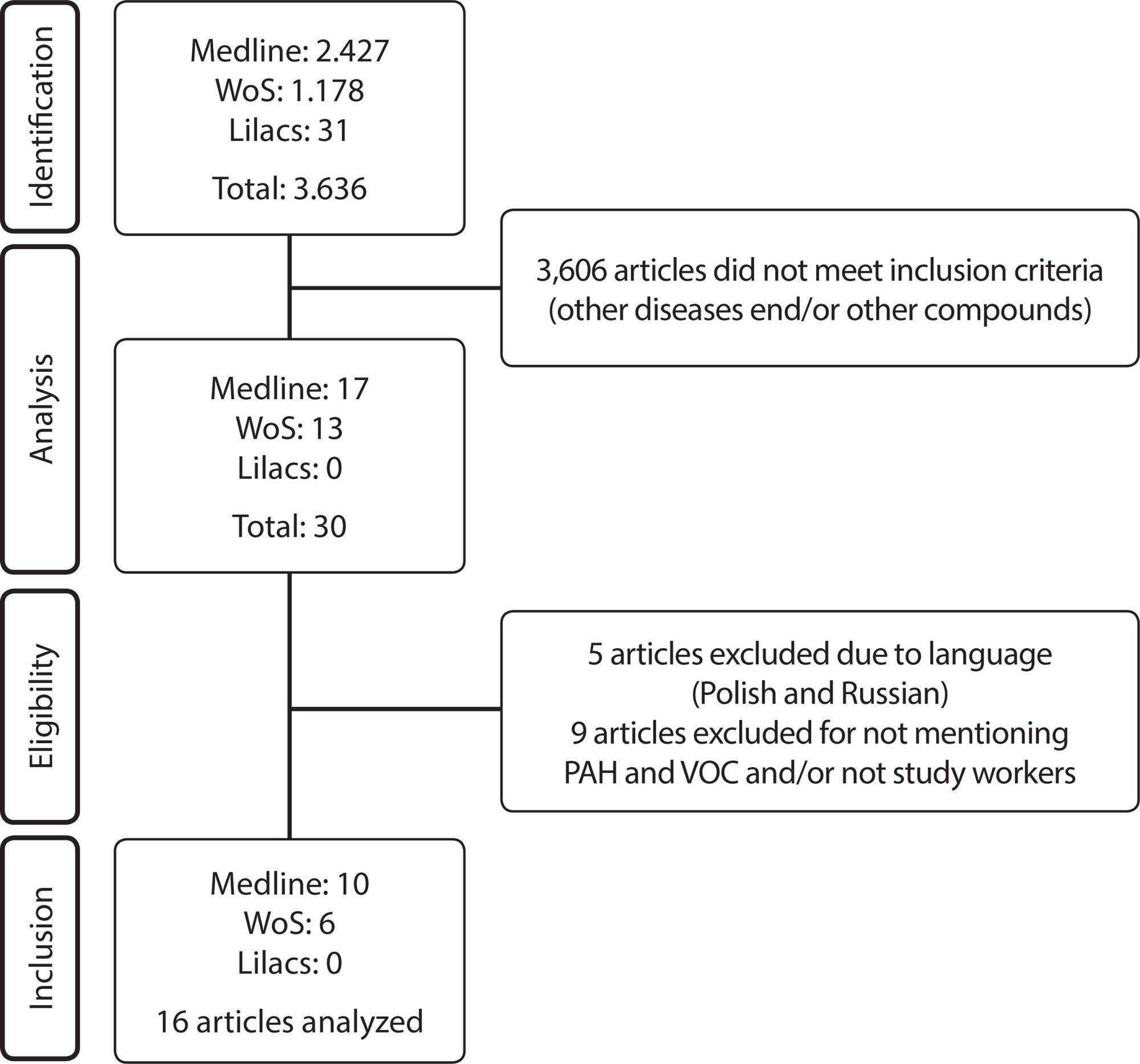
-
ORIGINAL ARTICLE08-19-2019
Mobile application for the teaching of the International Classification for Nursing Practice
Revista Brasileira de Enfermagem. 2019;72(4):1020-1027
Abstract
ORIGINAL ARTICLEMobile application for the teaching of the International Classification for Nursing Practice
Revista Brasileira de Enfermagem. 2019;72(4):1020-1027
DOI 10.1590/0034-7167-2018-0751
Views0See moreABSTRACT
Objective:
Developing a mobile application for the teaching of the International Classification for Nursing Practice.
Methods:
Methodological applied research for technological production, performed in three phases of the contextualized instructional design model: analysis, design and development.
Results:
The application has an initial screen, which provides information about the team and its purpose. Then, four moblets are listed, including presentation, user’s guide consisting of five modules, educational games and five clinical cases. The references on which the application was based are also presented.
Final considerations:
It was possible to develop an application with the potential to promote the knowledge of nursing students and professionals about this classification system.
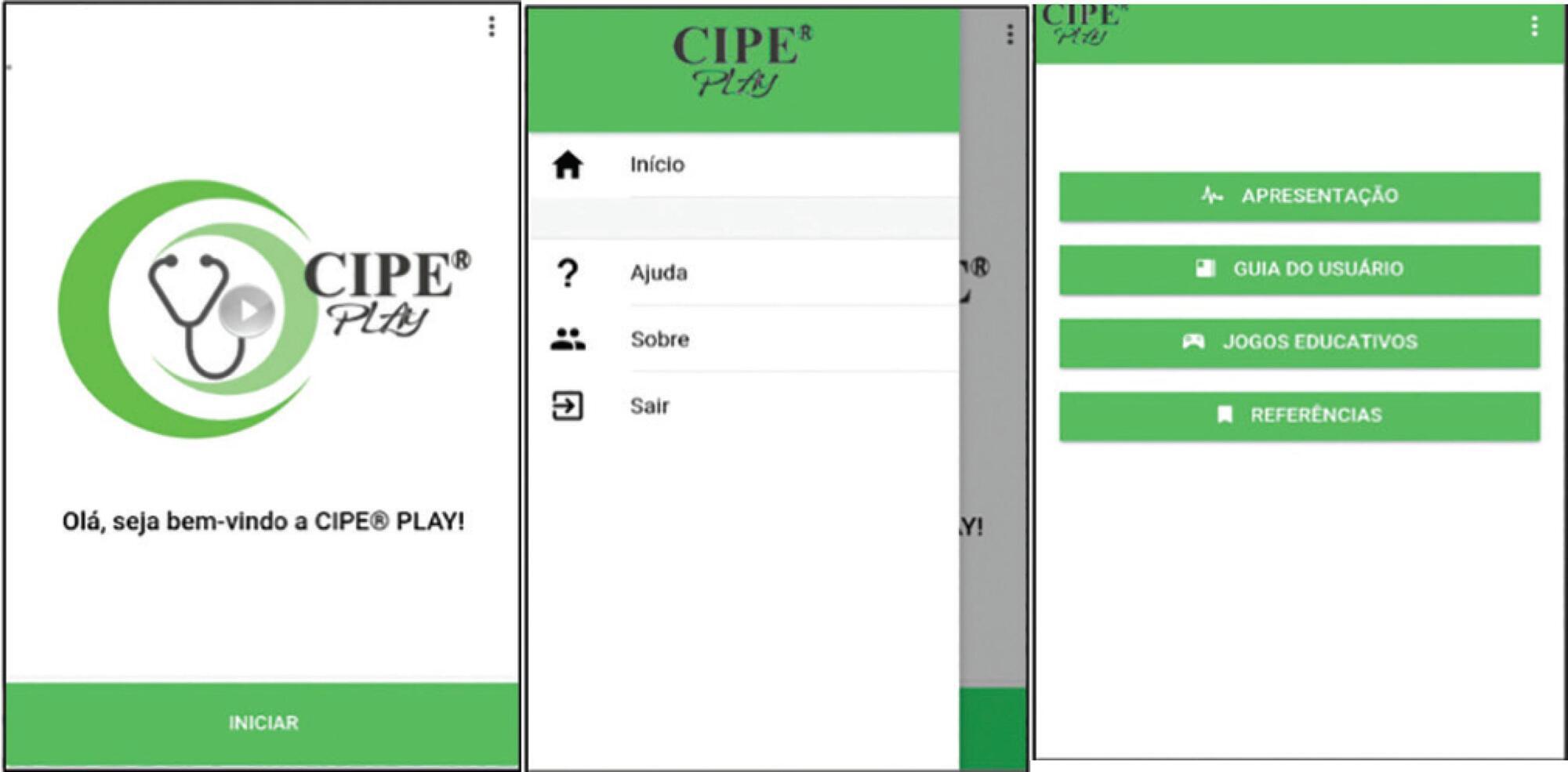
-
REFLECTION06-29-2020
Children’s (in)visibility in social vulnerability and the impact of the novel coronavirus (COVID-19)
Revista Brasileira de Enfermagem. 2020;73:e20200302
Abstract
REFLECTIONChildren’s (in)visibility in social vulnerability and the impact of the novel coronavirus (COVID-19)
Revista Brasileira de Enfermagem. 2020;73:e20200302
DOI 10.1590/0034-7167-2020-0302
Views0See moreABSTRACT
Objective:
To examine the impact of the infection by the novel coronavirus on Brazilian children in situation of social vulnerability based on the Millennium Sustainable Development Goals.
Method:
Reflective study based on discursive formulation in three aspects: principles of the objectives and goals for the millennium sustainable development; impact of the pandemic on the health of children and their families living in social vulnerability; and the role of pediatric nursing in the care provided – limits and challenges.
Results:
In January 2020, the news of COVID 19 is released as a pandemic. In Brazil, children and families are still without access to basic rights, thereby increasing their risks of social vulnerability because of the quarantine. The nursing field has an important role in monitoring children and their families, offering guidance in search for solutions and preventing contamination.
Conclusion:
There are still challenges to be overcome by the children and their families in situations of vulnerability against COVID-19.
-
ORIGINAL ARTICLE12-13-2019
Mobile health technology for gestational care: evaluation of the GestAção’s app
Revista Brasileira de Enfermagem. 2019;72:266-273
Abstract
ORIGINAL ARTICLEMobile health technology for gestational care: evaluation of the GestAção’s app
Revista Brasileira de Enfermagem. 2019;72:266-273
DOI 10.1590/0034-7167-2018-0641
Views0See moreABSTRACT
Objective:
to evaluate the GestAção application, based on the experience of pregnant women use.
Method:
an evaluative, applied, methodological, quantitative-qualitative study. This tool was evaluated by 13 pregnant women through questionnaires for sociodemographic profile characterization and Likert scale use to calculate Content Validity Index (CVI); and semi-structured interview, with analysis based on Semiotics.
Results:
the study evidenced a significant level of satisfaction of pregnant women with the application use, considering the objectives (CVI = 0.92), structure and presentation (CVI = 0.86), and relevance (CVI = 0.92).
Final considerations:
the GestAção application obtained an overall CVI of 0.90, evidencing it as a facilitating and supporting technology in the empowerment of pregnant women interested in obtaining knowledge about pregnancy. It has been proved to be a powerful tool to qualify good practices in nursing consultation.
-
08-19-2019
Degree in Nursing: education through problem-based learning
Revista Brasileira de Enfermagem. 2019;72(4):1071-1077
Abstract
Degree in Nursing: education through problem-based learning
Revista Brasileira de Enfermagem. 2019;72(4):1071-1077
DOI 10.1590/0034-7167-2018-0298
Views0See moreABSTRACT
Objective:
To describe how undergraduate courses in Nursing are using the problem-based learning (PBL).
Method:
Integrative literature review, from searches in the databases Education Resources Information Center (ERIC), Latin American and Caribbean Health Sciences Literature (Lilacs), and PubMed, from 2010 to 2015. 36 articles were analyzed.
Results:
A teaching method used in all continents, the PBL enables improvement of the critical thinking, autonomy, motivation for learning, active search attitude, ability to work in teams, and problem-solving. Difficulties and challenges relate to the training of students and teachers to understand the principles of the method.
Final considerations:
The benefits of PBL coincide with the needs of nursing training, but its applicability demands constant review in seeking to develop the skills necessary for this training.
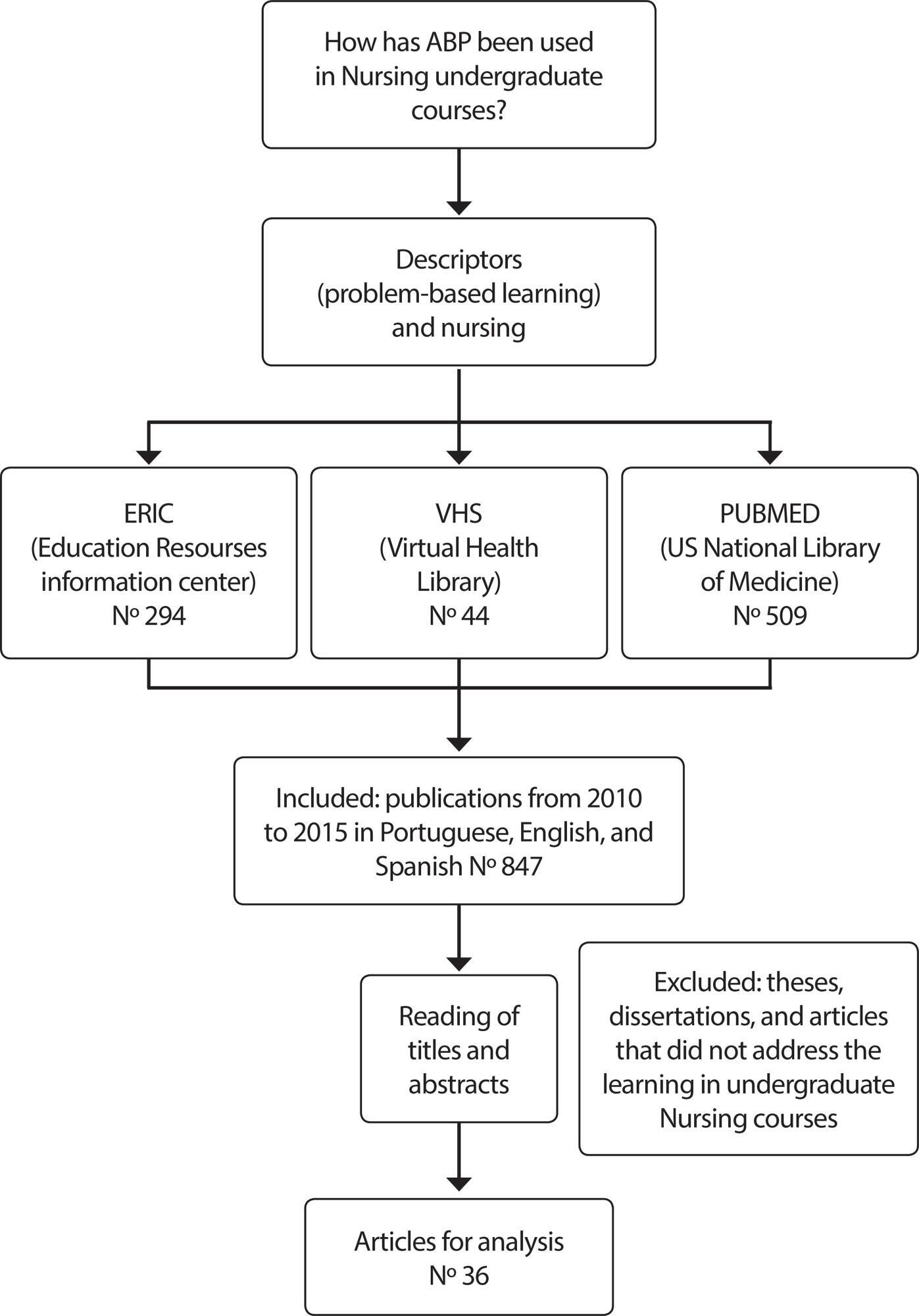
-
ORIGINAL ARTICLE08-14-2020
Education to prevent ventilator-associated pneumonia in intensive care unit
Revista Brasileira de Enfermagem. 2020;73(6):e20190477
Abstract
ORIGINAL ARTICLEEducation to prevent ventilator-associated pneumonia in intensive care unit
Revista Brasileira de Enfermagem. 2020;73(6):e20190477
DOI 10.1590/0034-7167-2019-0477
Views0INTRODUCTIONVentilator-Associated Pneumonia (VAP) is one of the complications related to the care of patients hospitalized in the Intensive Care Unit (ICU), which, according to consulted authors, exceeds the mortality rates of other Healthcare Related Infections (HRI). VAP is the second most frequent infection in patients admitted to the ICU, as well as the most prevalent […]See more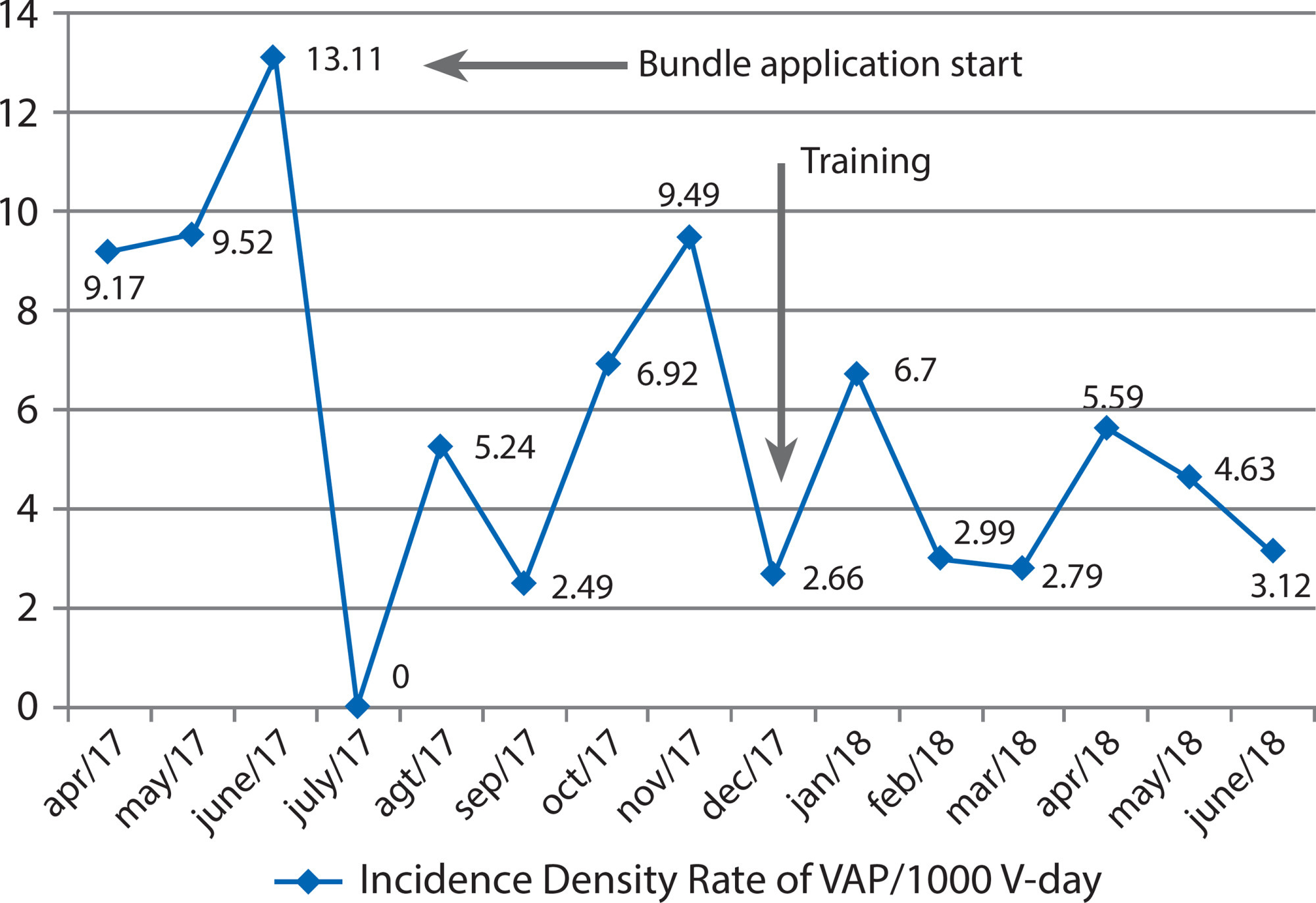
-
ORIGINAL ARTICLE10-23-2020
Building and validating an educational video for elderly individuals about fall risks
Revista Brasileira de Enfermagem. 2020;73:e20200010
Abstract
ORIGINAL ARTICLEBuilding and validating an educational video for elderly individuals about fall risks
Revista Brasileira de Enfermagem. 2020;73:e20200010
DOI 10.1590/0034-7167-2020-0010
Views0See moreABSTRACT
Objective:
to build and validate educational video for elderly individuals about fall risks.
Methods:
methodological study with video building. validated by 22 judges and assessed by 22 elderly individuals. Content was selected from the Fall Prevention Model and items from the Falls Risk Awareness Questionnaire. Items with an agreement greater than 0.80 were considered valid. verified through Content Validation Index (CVI) and binomial test.
Results:
building the video was guided by the Cognitive Theory of Multimedia Learning. Digital animation and audio narration were used. It lasted ten minutes and five seconds and included biological. socioeconomic. behavioral and environmental risks as well as precautions to avoid them. The CVI of judges had an average of 0.99. and of elderly individuals. an average of 1.0.
Conclusion:
the video was built and validated for content and understanding and can be used to prevent falls in elderly individuals.
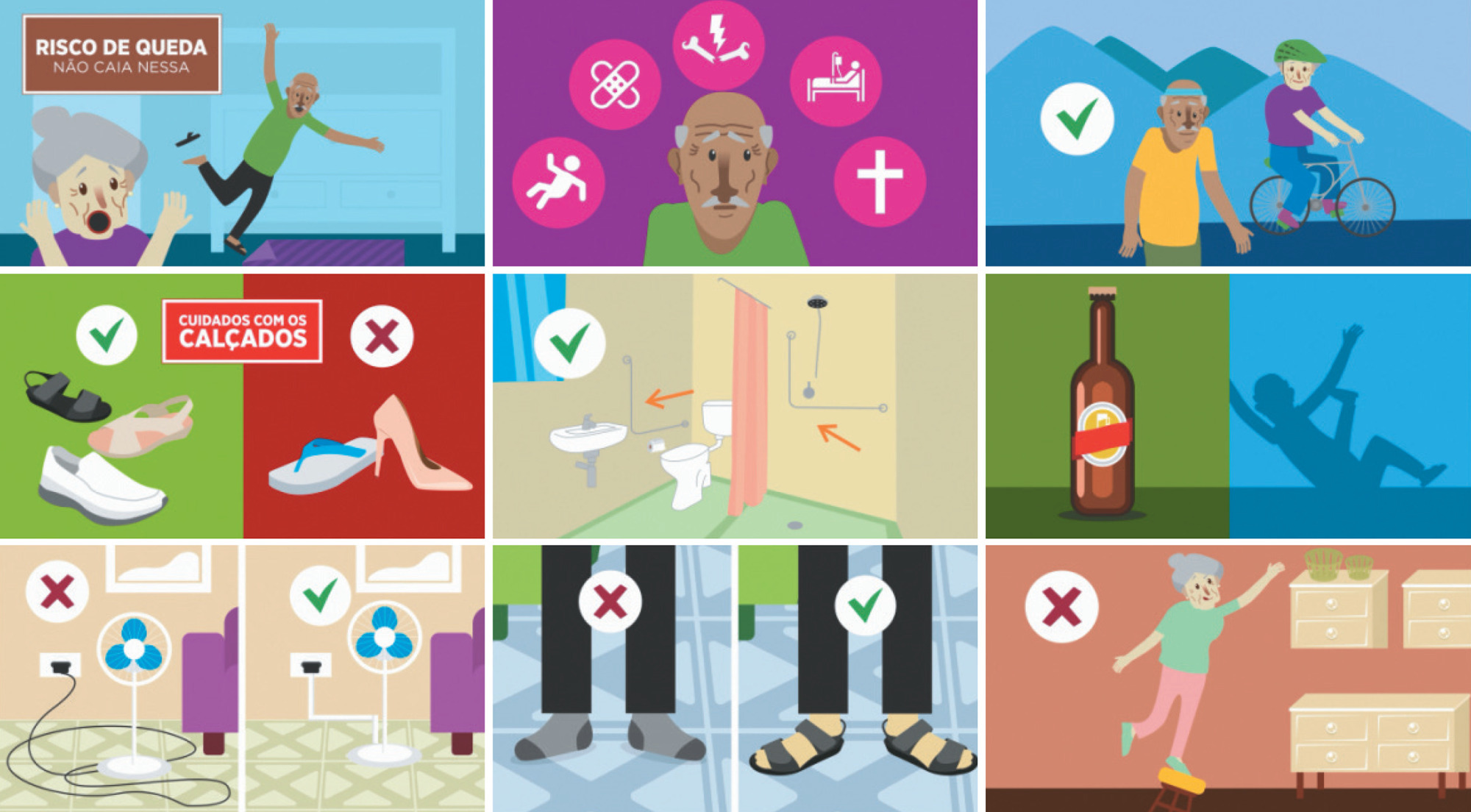
Search
Search in:
Nuvem de Tags
Adolescente (85) Atenção Primária à Saúde (239) COVID-19 (91) Criança (91) Cuidados de Enfermagem (269) Educação em Enfermagem (151) Educação em Saúde (139) Enfermagem (930) Enfermagem Pediátrica (86) Estudantes de Enfermagem (77) Estudos de Validação (131) Família (87) Idoso (208) Promoção da Saúde (99) Qualidade de Vida (104) Saúde do Trabalhador (86) Saúde Mental (145) Saúde Pública (82) Segurança do Paciente (150) Tecnologia Educacional (100)



